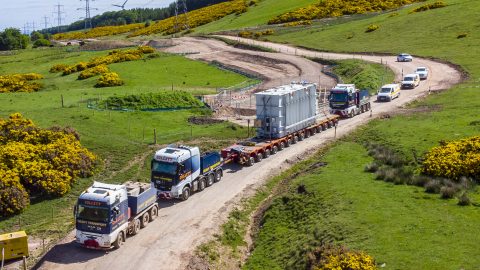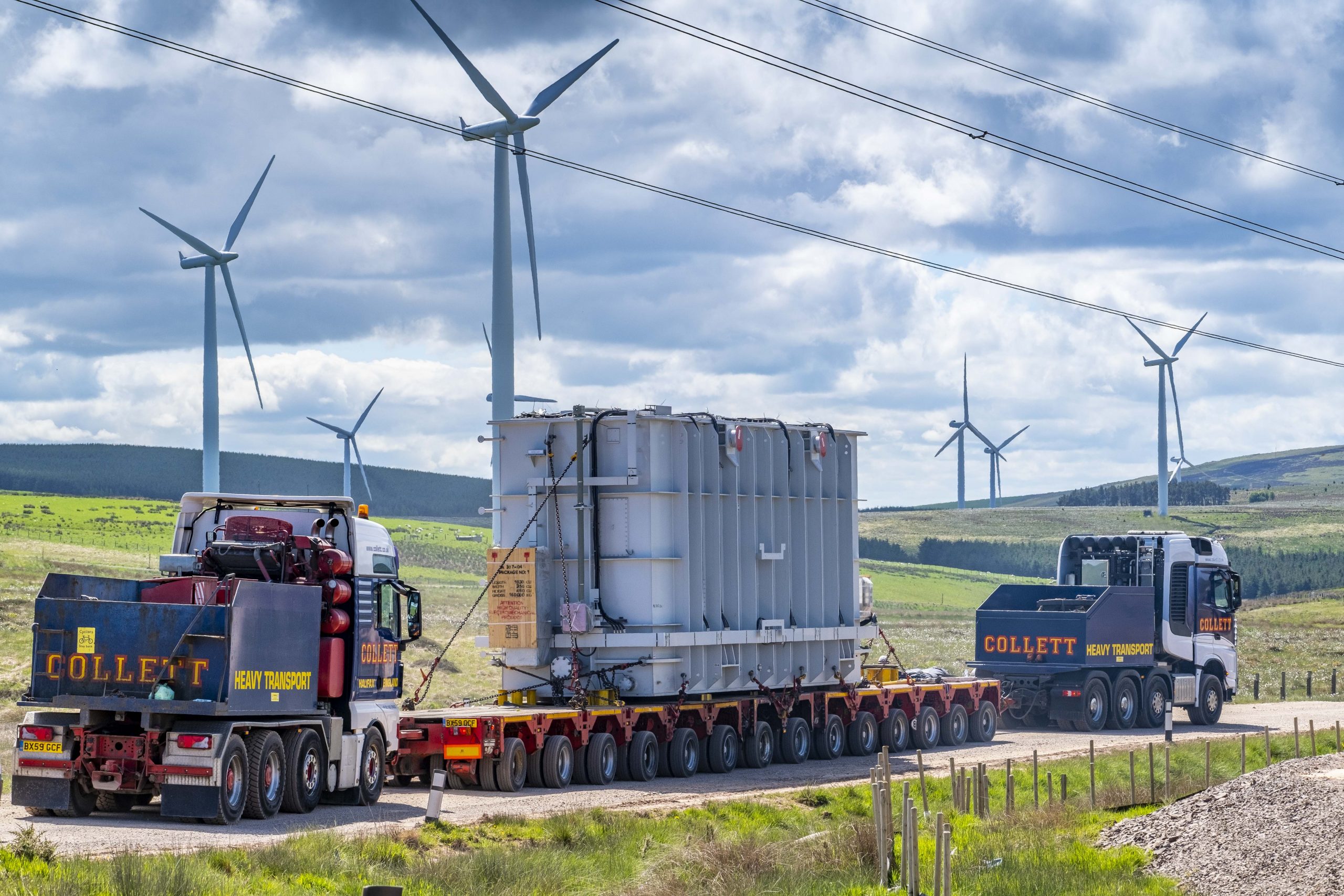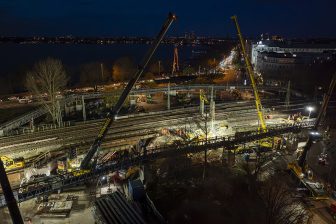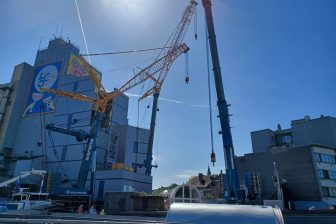
Collett takes shunt reactors on a 5,000-mile journey
The two 160-ton shunt reactors, part of the Neart na Gaoithe offshore wind farm project, jointly owned by EDF Renewables and ESB have recently completed a 5,000-mile journey to the onshore substation site. The transport was completed by the abnormal loads specialist Collett & Sons. The company was contracted with the full scope of work providing a door-to-door service, including the project management, engineering and the transport of the two shunt reactors.
A year before deliveries commenced, Collett’s consulting department were contracted to undertake multiple surveys to find the most feasible route. This included all route surveys, swept path analysis reports, topographical
surveys, bridge height surveys and wire cable height surveys. This resulted in Collett liaising with local authorities to temporarily remove street furniture and employing tree surgeons to remove obstructing foliage.
The shipping of the shunt reactors
The shunt reactors were transported in three stages before arriving at the substation site. First, Collett worked in
partnership with a European partner to transport the shunt reactors ahead of their arrival in the UK. The Collett projects department were then responsible for all port operations including the loading of the vessel, also chartered by Collett, for the 4800 miles to the Port of Leith in Scotland.
Collett planned the cargo’s discharge, including providing crane lifting plans and an agreed programme of works for all loading and discharge operations. Once at the port, utilising an 800-ton crane, the shunt reactors were discharged onto a dedicated 14-axle line modular flat top trailer. Both shunt reactors were offloaded at the port onto stools for temporary storage.
Collett also transported and stored multiple ancillary components at their port side depot in Grangemouth. Utilising their 550-ton capacity girder bridge with 20-axle lines, Collett transported the shunt reactors from Leith Docks to Innerwick.
The road trip
Due to narrow access along the remainder of the route, Collett transhipped each of the two shunt reactors from the 20-axle girder bridge on to a 14-axle flat top modular trailer in a dedicated road closure area, complete with all traffic management, in order to complete delivery. All movements were facilitated under police escort, as well as Collett’s in-house fleet of pilot vehicles.

At the NnG onshore substation site, located in the Lammermuir Hills, Collett’s Heavy Lift Team offloaded and positioned the shunt reactors into their final position using a hydraulic jacking and skidding system. Part two of the project is expected to take place in the coming weeks , when two 180Te supergrid transformers are due to be delivered to the wind farm site.
You just read one of our premium articles free of charge
Register now to keep reading premium articles.




